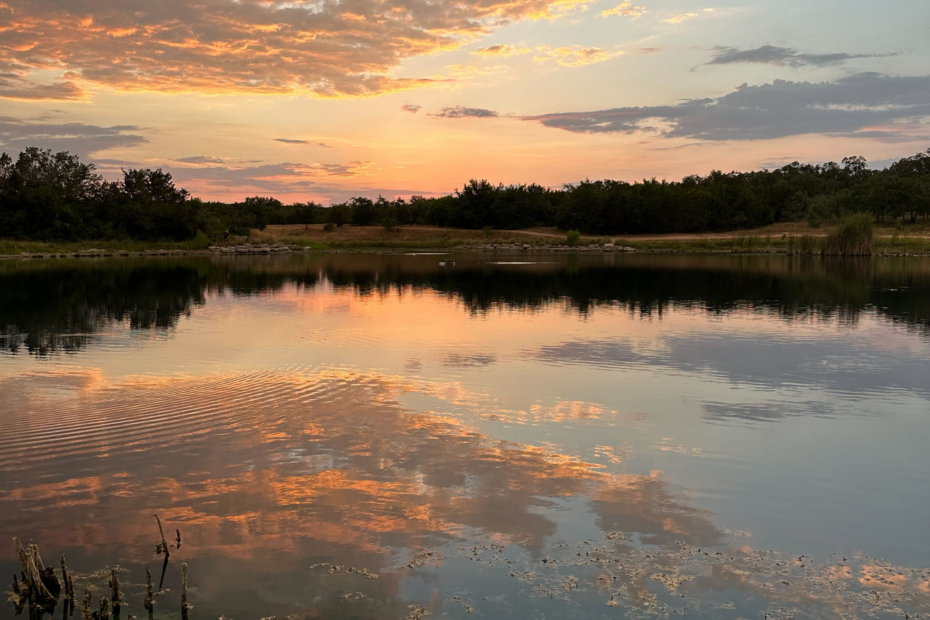71% of the Earth’s surface is water. That includes Texas’ 191,000 miles of streams. Every stream flows through a watershed, while an aquifer lies beneath both and stores groundwater. Austin is home to Edwards Aquifer, which supplies water to about two million people.
Austinites are in an important position to determine the future progression of water pollution in our city. The Colorado River and its feeding creeks run directly through downtown Austin. This central location makes these bodies of water extremely vulnerable to contamination. Pollution, litter and chemical dumping pose harmful threats to each and every watershed in Austin.
What is a watershed? It is an area of land that drains all running water and rainfall to an outlet like a reservoir, the mouth of a bay, or any point along a stream channel.
Though “what is a watershed?” is a simple question, Ella Landau helped answer some of the much more complex questions. She studies environmental engineering, specializes in water resources and actively researches water dynamics at the Johnson Environmental Turbulence Lab at UT.
Landau shared the importance of watersheds and explained that every drop of water flowing through a watershed will circle back and directly impact the local residents.
“Any contaminants on that land will also end up back in our pipes, in our pools and in our lakes,” Landau said.
There is a consequence of every action we take. So, what should we stop doing? What should Austinites be aware of?
Common Contaminants and How to Combat Them
The Environmental Protection Agency compiled a list of products that pose the greatest threat to our water supply. These products are predominantly microorganisms or organic and inorganic chemicals.
Microorganisms:
Microorganisms include bacteria, viruses and protozoa. E.Coli is the most notable and discussed bacteria in this category. Water with high levels of E.Coli indicates contamination from fecal pathogens. Disgusting, I know. An even more concerning fact is that Shoal Creek (UT’s watershed) has high levels of E.Coli concentration.
So what causes this? Fecal matter can end up in bodies of water because of sewage leaks, damaged storm drains, improper septic tanks and similar waste disposal malfunctions.
Since most people are not professional sewage engineers, addressing this issue is challenging on an individual level. However, it is important for your safety to know about E.Coli and other harmful microorganisms when evaluating the water quality in your community. If your neighborhood has a pond or there is a local lake you like to visit, use this link from ATX Watersheds to make an informed decision about whether you want to expose yourself to the bacteria that might be swimming with you.
Chemicals:
The most common chemical contaminants come from lead pipes, landscaping products, farming practices, disinfectants and pharmaceuticals. Artificial fertilizers and pesticides are often the initial and foremost examples that come to mind. However, many other day-to-day activities can harm the water supply.
What you put down your drains actually matters. Flushing prescription medications is NOT proper disposal. The chemical compounds in those medications can severely disrupt ecological balance and damage wildlife in the bodies of water where that water drains out. Similarly, pouring cleaning products and potent disinfectants down your drain inadvertently kills living organisms in an innocent water ecosystem.
Lead pipes….. Oh, lead pipes. In 1986, laws were passed to end the use of lead pipes in construction practices. Unfortunately, many old houses and buildings still have these pesky health risks. Lead pipes are more commonly criticized for the havoc lead exposure wreaks on human bodies, but lead also harms the environment‘s biodiversity. Water from lead pipes can alter the growth and reproduction rates of plants and animals. It’s important to ask your landlords or call plumbers to ensure that you are no longer exposed to this kind of pipe system.
Policy, Policy, Policy
While everyday preventative measures are great, Landau said the responsibility of keeping our water supply safe falls on policy-makers.
“Policy is the biggest thing,” Landau said. “I can tell you any rule, but individual choices don’t impact our generational water supply. The only real impact must start by creating enforceable policies.”
Politicians and lawmakers have the strongest influence over water quality standards because they are responsible for writing and/or endorsing legislation that dictates the meaning of “safe water.” The legislation directly impacts society’s access to clean groundwater and drinking water.
The current government regulations for drinking water still allow for some contaminants.
This link lists the primary water regulations and the allowed contaminants. Currently, it is legal for the following byproducts and chemicals to be present in our water supply: copper, fluoride, glyphosate and many, many more.
Exposure to copper can cause gastrointestinal distress and liver or kidney damage.Exposure to fluoride can cause bone disease. Exposure to glyphosate can cause reproductive problems. And the list continues.
Don’t forget. The EPA is funded by grants from Congress. This means that Austinites should educate themselves on what water quality they should demand and which politicians will support them in their efforts. Like many things, knowing who and what to vote for can have the biggest and most beneficial long-term impact.
Other Ways to Love the Austin Environment
Maintaining clean water is essential! But there are many other things that Austinites can do to keep Austin weird AND clean.
Keep Austin Beautiful is a non-profit organization that focuses on keeping Austin’s green spaces and waterways clean. On Earth Day, April 15, they hosted a citywide day of service. This event was part of their overall campaign to target the city’s litter problem. Volunteering, donating and sharing their mission can greatly improve the city’s environment.
The UT Zero Waste Program is also an incredible resource on UT’s campus. The program aims to make UT less wasteful. One of their tactics is to “convert major campus events to zero waste.” Campus organizations can reach out to the program and collaborate with the team to get tips and tricks on how to make their events more green.
